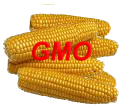01st Aug 2009
Which Pet Food Claims are Verified by an Independent Third-Party?
An USDA-accredited organic certification agency (i.e., the independent third-party) verifies the following claims (none of these claims can be verified for non-certified organic pet food products):
 1. Organic status of ingredients
1. Organic status of ingredients
2. Sourcing of ingredients (e.g., countries of origin, human-grade vs. feed-grade quality)
3. Qualities of ingredients (e.g., antibiotic-free, hormone-free, GMO-free)
4. Omission of toxic synthetics during growing and handling of ingredients (e.g., no use of synthetic pesticides, GMOs, antibiotics, or hormones)
5. Omission of toxic synthetics during the manufacture and storage of pet food product (e.g., sanitizers, pesticides)
6. Processing details (e.g., what temperatures are used during dehydration)
The organic certifier has access to all of the records of the manufacturing facility and of every single production batch. These records have to be available for re-inspection if necessary for 5 years.
Nobody can guarantee any of the claims listed above for non-certified organic pet food products, because records do not have to be disclosed to anybody who is not associated with the pet food company.
You may see that organic certification of pet food products substantiates a manufacturer’s claims by demanding full disclosure of all records. Organic certification agencies also inspect a certified organic pet food manufacturer’s marketing materials and product packaging information to ensure that the manufacturer’s product descriptions are truthful.
From my experience as a certified organic pet food manufacturer who routinely compares pet food products and claims, I can attest to the fact that organic certification provides the tightest regulatory oversight in the pet food industry. I am sure every manufacturer of certified organic pet food products will agree with me.
An USDA-accredited organic certification agency (i.e., the independent third-party) verifies the following claims (none of these claims can be verified for non-certified organic pet food products):
 1. Organic status of ingredients
1. Organic status of ingredients
2. Sourcing of ingredients (e.g., countries of origin, human-grade vs. feed-grade quality)
3. Qualities of ingredients (e.g., antibiotic-free, hormone-free, GMO-free)
4. Omission of toxic synthetics during growing and handling of ingredients (e.g., no use of synthetic pesticides, GMOs, antibiotics, or hormones)
5. Omission of toxic synthetics during the manufacture and storage of pet food product (e.g., sanitizers, pesticides)
6. Processing details (e.g., what temperatures are used during dehydration)
The organic certifier has access to all of the records of the manufacturing facility and of every single production batch. These records have to be available for re-inspection if necessary for 5 years.
Nobody can guarantee any of the claims listed above for non-certified organic pet food products, because records do not have to be disclosed to anybody who is not associated with the pet food company.
You may see that organic certification of pet food products substantiates a manufacturer’s claims by demanding full disclosure of all records. Organic certification agencies also inspect a certified organic pet food manufacturer’s marketing materials and product packaging information to ensure that the manufacturer’s product descriptions are truthful.
From my experience as a certified organic pet food manufacturer who routinely compares pet food products and claims, I can attest to the fact that organic certification provides the tightest regulatory oversight in the pet food industry. I am sure every manufacturer of certified organic pet food products will agree with me.
 Posted by Heidi Junger, PhD under
Posted by Heidi Junger, PhD under  Organic and Green Pet Foods
Organic and Green Pet Foods  Comments Off
Comments Off

 A recent study indicates that a diet containing genetically modified or engineered (GM, GE) foods can impair reproduction in laboratory mice. Although it is has not yet been determined if this also applies to other species, the results of this study certainly suggest that it is safer to feed your pets foods that don”t contain GE ingredients. The safest way to do this is to choose certified organic pet foods, in which the use of GE ingredients are prohibited and their exclusion is verified by an unbiased third party.
A recent study indicates that a diet containing genetically modified or engineered (GM, GE) foods can impair reproduction in laboratory mice. Although it is has not yet been determined if this also applies to other species, the results of this study certainly suggest that it is safer to feed your pets foods that don”t contain GE ingredients. The safest way to do this is to choose certified organic pet foods, in which the use of GE ingredients are prohibited and their exclusion is verified by an unbiased third party. Roundup is the brand name of a systemic, broad-spectrum herbicide produced by Monsanto; it is the number one selling herbicide worldwide. Roundup contains the active ingredient glyphosate, which is the most used herbicide in the USA. Roundup is available in several formulations including Roundup WeatherMAX, Roundup Weed and Grass Killer Super Concentrate, Roundup Weed and Grass Killer Ready-To-Use Plus.
Roundup is the brand name of a systemic, broad-spectrum herbicide produced by Monsanto; it is the number one selling herbicide worldwide. Roundup contains the active ingredient glyphosate, which is the most used herbicide in the USA. Roundup is available in several formulations including Roundup WeatherMAX, Roundup Weed and Grass Killer Super Concentrate, Roundup Weed and Grass Killer Ready-To-Use Plus. Anyone who considers his or her pet a part of the family knows how hard it is to pick a good pet food from the overstocked displays at their favorite neighborhood or online pet supply store. At first glance, it seems like one has a myriad of great choices—that is, until you actually read the fine print and begin to understand what label terms mean and wonder which claims to trust.
Anyone who considers his or her pet a part of the family knows how hard it is to pick a good pet food from the overstocked displays at their favorite neighborhood or online pet supply store. At first glance, it seems like one has a myriad of great choices—that is, until you actually read the fine print and begin to understand what label terms mean and wonder which claims to trust.